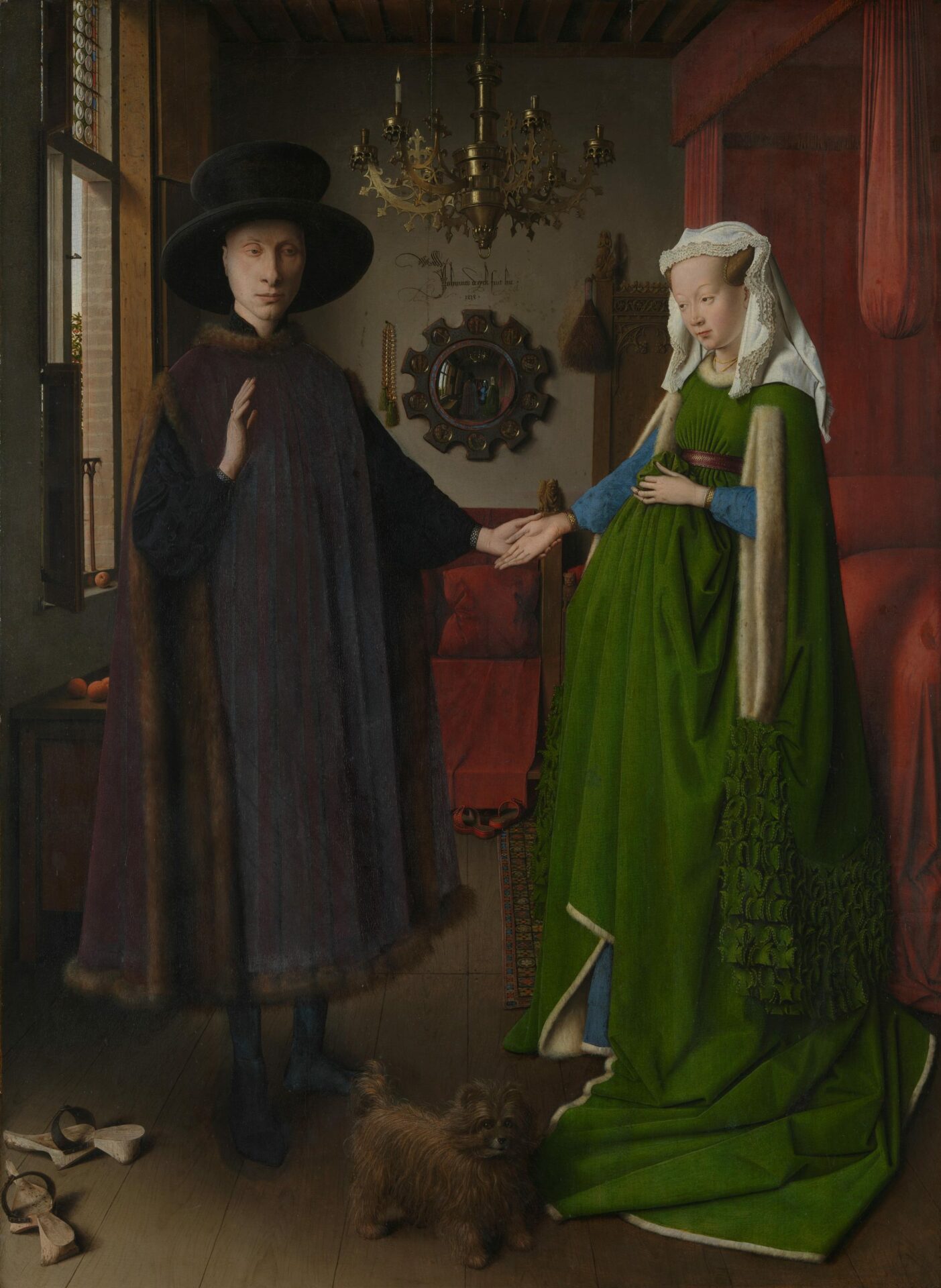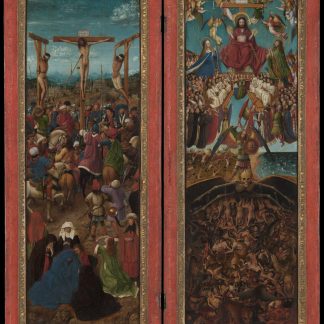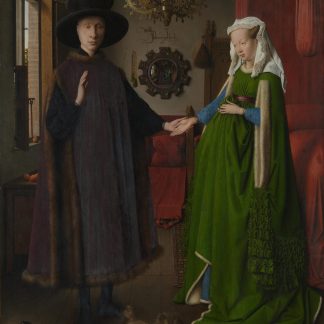Arnolfini Portrait
From $28.69
Product Options:
Giclee Print – Paper:
Giclee print on premium archival quality Fine Art Matte paper. Certificate of Authenticity included. Shipped rolled and ready to be framed.
Giclee Print – Canvas:
Exhibition quality canvas stretched over wooden stretcher bars w/mirrored edge so none of the original image is lost. Certificate of Authenticity included. Ready to hang on your wall.
Giclee Print – Framed:
Giclee print on premium archival quality Fine Art Matte paper with selected frame, single white mat & acrylic front. Certificate of Authenticity included.
Description
It is considered one of the most original and complex paintings in Western art, because of its beauty, complex iconography, geometric orthogonal perspective,[2] and expansion of the picture space with the use of a mirror. According to Ernst Gombrich “in its own way it was as new and revolutionary as Donatello’s or Masaccio’s work in Italy. A simple corner of the real world had suddenly been fixed on to a panel as if by magic… For the first time in history the artist became the perfect eye-witness in the truest sense of the term”. The portrait has been considered by Erwin Panofsky and some other art historians as a unique form of marriage contract, recorded as a painting. Signed and dated by van Eyck in 1434, it is, with the Ghent Altarpiece by the same artist and his brother Hubert, the oldest very famous panel painting to have been executed in oils rather than in tempera. The painting was bought by the National Gallery in London in 1842.
Bibliography
Arnolfini Portrait, https://en.wikipedia.org/w/index.php?title=Arnolfini_Portrait&oldid=1100763432 (last visited Aug. 10, 2022).





